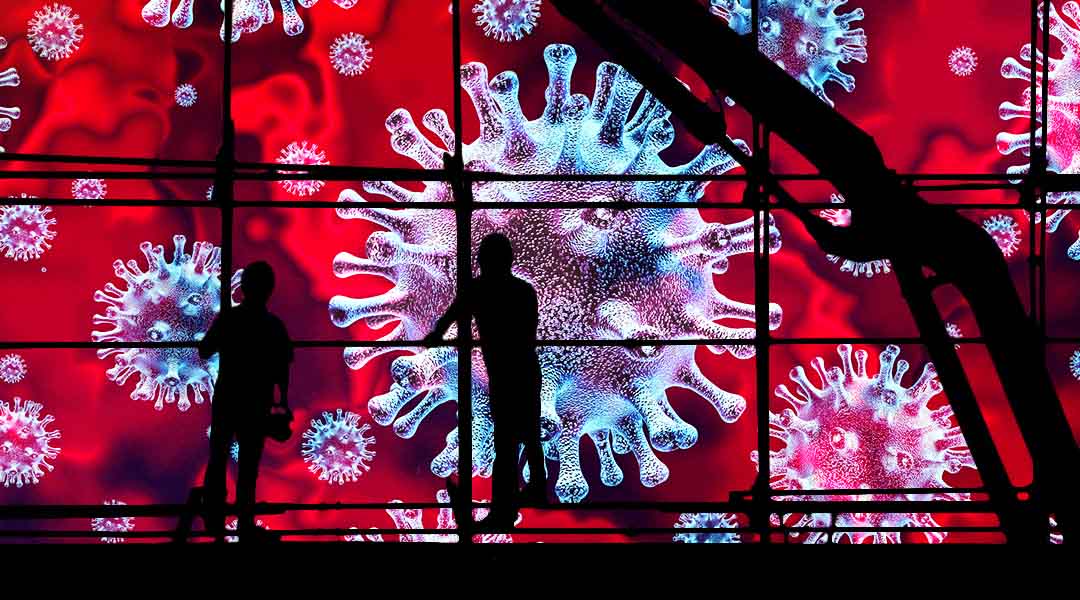
Reopening during a pandemic: Are architects ready for the new normal?
Does anyone know how to run their business during a pandemic? Is this abnormal way we’re living really our ‘new normal’? Businessmen are chomping at the bit. “We must get back to work.” “Companies will die if we don’t.” “But many more people will die if we reopen prematurely.” It’s all we hear on the BBC, CNN, and Fox. Thankfully, at least from local online chatter, Filipino and ASEAN architects and designers seem more prudent than our Western neighbors. They appreciate the lessons evidenced by new COVID-19 cases spiking in countries and cities that emerged from lockdown too soon and too leniently, better than many world leaders seem to. Perhaps because designers and planners are better at envisioning process, supply chains, and cause and effect.
With a vaccine and cure many months away, there isn’t any going back to normal any time soon—if at all. The World Health Organization said this week that the coronavirus might “never go away.” And with the world so interconnected, the threat of more pandemics to come is all too real. In this new normal, a pandemic in China is a pandemic everywhere.
We asked architects, designers, and builders in Manila to share where they’re at and how they’re prepping to operate while the coronavirus pandemic runs rampant across the planet. What have they done to survive these past three months? What are their plans for the next six, twelve, or more? How ready are they to implement the IATF (Inter-Agency Task Force on Emerging Infectious Diseases) guidelines when they are allowed to go back to work? What keeps them awake at night? What vital lessons have they learned in the darkest of days of this new normal?
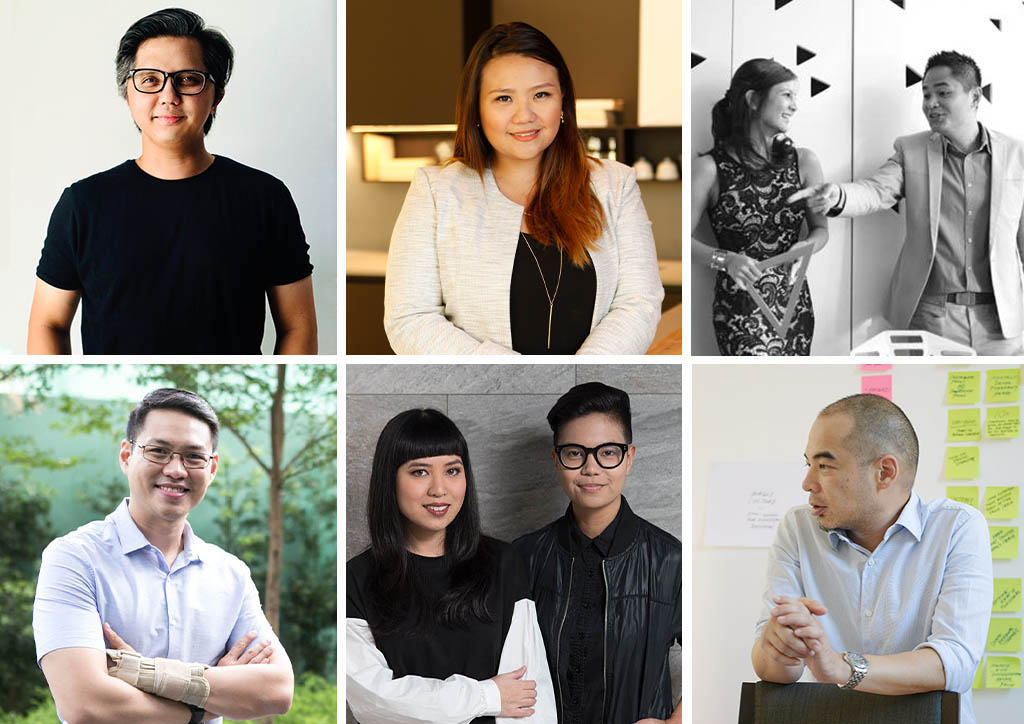
Our respondents are:
- Jason and Nikki Buensalido, principals of Buensalido+Architects
- Gino Cariño and Paolo Periquet, partners at specialty construction firm, Magis Homes
- Pai Edles and Misty Floro, principals of interior design firm Morfosis Design
- Vince Lim, principal of BCL Asia Landscape Architects, and CLARQ Design Studio
- Toni Vasquez, CEO and principal architect of T. I. Vasquez Architects & Planners (TVA&P)
Jojo Tolentino, president and CEO of architecture firm AIDEA, and his team finalized the company’s post-ECQ (enhanced community quarantine) protocols last week and are sharing their experiences, projections, and concerns in a supplementary piece to this article: Aidea isn’t just ready for the new normal, but to build a better one.
How has your practice been affected by the pandemic?
Buensalido: When the government first announced the quarantine schedule, our office was not too shocked, but we had to work fast to set out guidelines on travel, work-from-home, and the workforce. Fortunately, part of our culture is always to be responsive, whether to clients or context, so that mindset helped us adjust quickly.
Vasquez: From the time we saw a steady rise of 20 COVID-19 cases a day, I knew a disaster was imminent. Admittedly, I was in denial that a lockdown would happen, maybe for the economic horrors I knew would follow. But I knew something had to change in the workplace to lower the risk for my staff. So I drafted the first phase of our Business Continuity Plan, where we would work in rotation to lessen staff exposure to the coronavirus, all while ensuring TVA&P would still operate at 75% workforce at a time. I was adamant about giving it a try but didn’t get to implement since the government suddenly enforced a Luzon-wide lockdown.
Cariño: All job sites were suspended due to the ECQ. Our work is compensated through accomplishment, so we’ve been bleeding for the past three months. We’ve had to advance 13th-month pay to everybody. In lieu of salaries, we switched over to sending financial assistance. Only a core team has been on a work-from-home arrangement. This team, working closely with Magis partners, has been monitoring, assisting, and attending to the essential needs of our workers and their families. I am proud of how they’ve rendered HR support during this crisis.
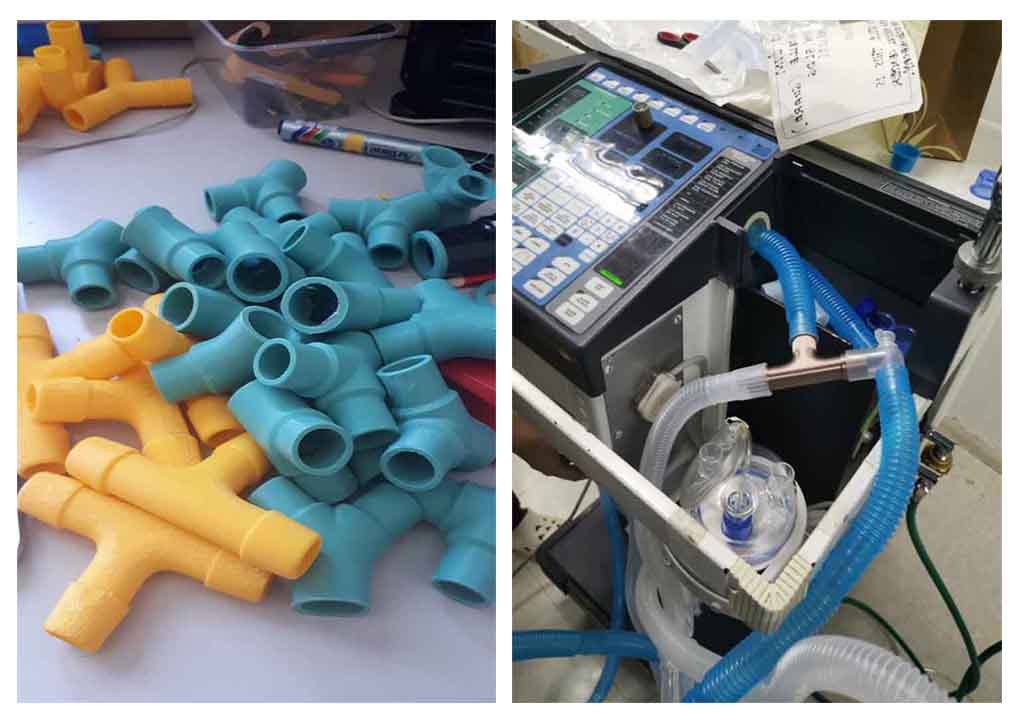
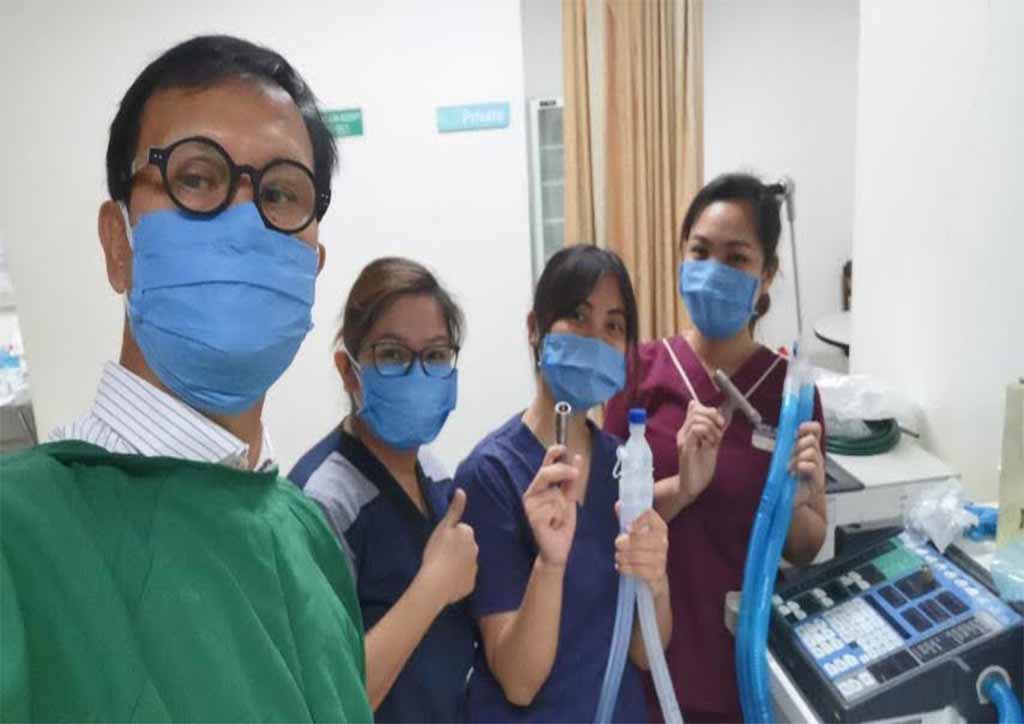
In our little way, we’ve also extended some help on the COVID-19 front, providing design input, prototyping work, or even just small funds for the development of medical devices and better PPEs for front liners. Notably, one group is with our architecture and designer friends, pulled together by Andy Locsin with Ed Calma, Tina Periquet, Joey Yupangco, and other folks. Bayanihan spirit is strong!
Meanwhile, the core team has taken advantage of the rare opportunity to check up on clients, learn and relearn, assess, research, anticipate, and plan for the future. We are excited to roll out some of the ideas—systems, new services, even products—we’ve developed over the course of this quarantine.
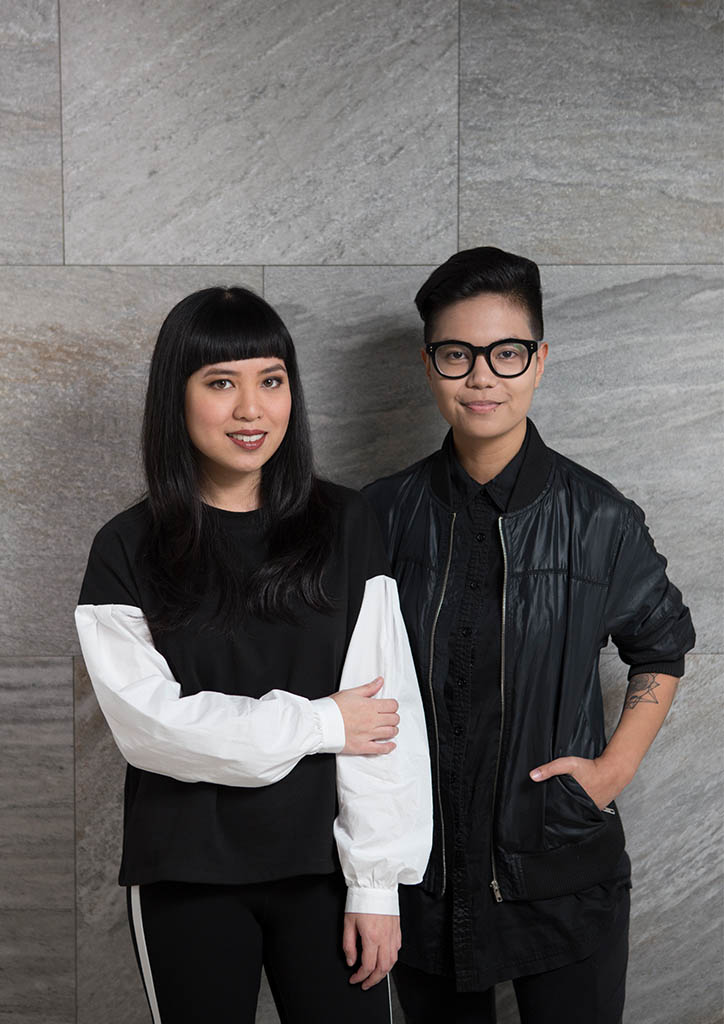
Did you cease or scale back operations during the quarantine? What factors went into your decision?
Morfosis: We scaled back operations starting April 1 to three days a week, Monday to Wednesday, still working from home. We came about this decision by making a thorough business review—projections on sales, expenses, and collectibles. One of our goals was to minimize costs because we foresaw a slowdown in sales and collectibles. For each action we took, we prioritized the safety of our employees and the company’s survival—we had to ensure we would have a company and office to go back to after the pandemic. First, Pai and I decided to get a 50% pay cut. To help our employees, we offered to advance their pro-rated 13th-month pay.
Lim: Scale back, yes. We targeted a 30 to 35% cut in our monthly OPEX. Management took an 80% pay cut. We reduced the workweek, bringing staff pay down by 20%. We also took out OT pay. For our landscape construction arm, we released a pro-rated 13th month on top of a full salary for the March 16 to April 15 payroll for the employees there. As we didn’t get a grant from DOLE and SSS is taking a while to release, we sold our plant stocks. The profit went to our gardeners, and together with the pro-rated 13th month, we were able to complete a full month’s salary for each employee. For our design staff who work from home, we gave them an additional allowance to cover the cost of electricity and Internet and mobile data usage.
We are now studying the budget needed for sanitation requirements against the coronavirus, new hardware to increase the efficiency of satellite work, and transportation for people needing to visit the office.
Buensalido: We didn’t scale back until a month after the lockdown. Despite design project slowdown and construction activities put on hold, we tried to find ways to sustain and even absorb the salaries of our people, though not all had a full roster of tasks on their plate. To help our cash flow, we reached out to clients, inquired about their action plans for the projects, and asked them to facilitate our billings. We talked to our landlords for due date extensions and asked our consultants whether they could continue to support us during the ECQ. We also coordinated with government agencies about supporting affected staff and a host of other due diligence.
Once we had a full understanding of the supply chain, we created various scenarios, from bad to good, on which we based projected financial standings in the new normal, for which we made contingency plans.
The whole time, we did our best to communicate honestly with the team on the seriousness of the pandemic and its effect on operations and business. After a month into the quarantine, we had to reduce our workforce by about 30%. We then released half of the 13th month of those affected, followed by the government amelioration, which we were able to file and distribute successfully. Since then, some employees have come back, based on the movement of projects and the on-boarding of new ones. Our management is continuing to find ways and projects to bring us back to 100%.
Cariño: 100% stopped all site work by government mandate.
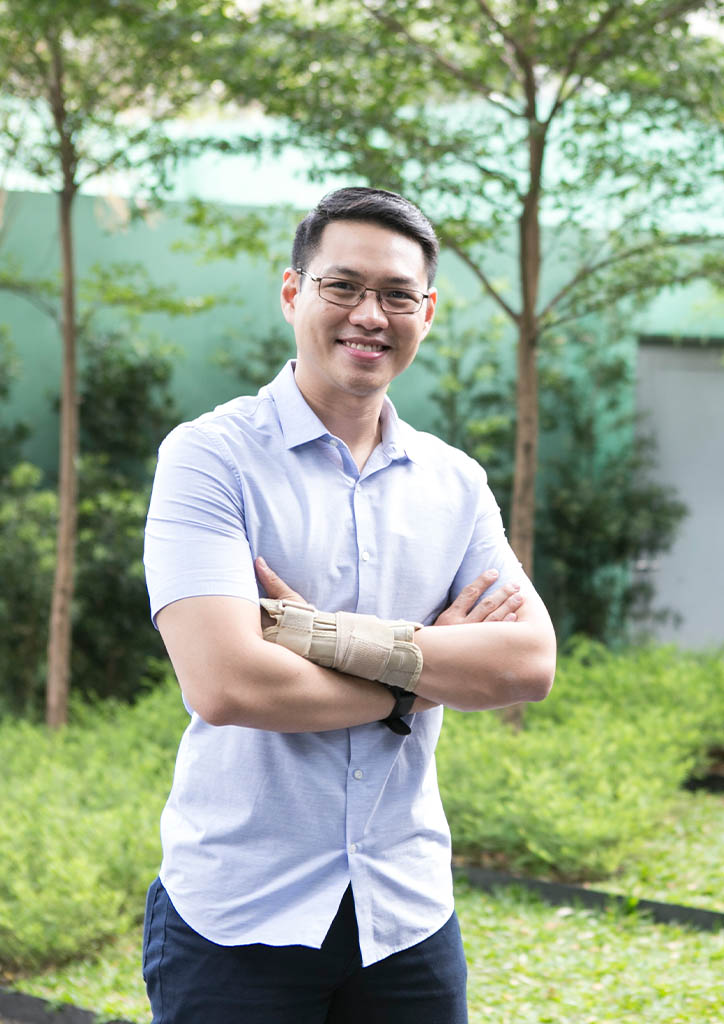
Clients. How are they hurting? Did they cancel or postpone projects? How about payment for work done? How has the pandemic affected project timetables?
Lim: Because about 80% of our business is with real estate clients, we are severely hit by this. Some projects are indefinitely postponed, others terminated, as some clients resorted to doing things in-house. The work still being done is mostly design development and FCD for soon-to-be constructed projects. Payments are delayed now, especially since some corporate clients prefer to process hard copies of billings, and their paperwork got stuck in the office during the lockdown. Other clients wanted to shift to online transfers, which is fine, except that they want us to open an account in their bank of choice—something we can only attend to once the ECQ’s lifted.
There’s still work, thankfully. A good number of our projects are in the DD/CD and construction stages, which keeps us busy. Timetables have become more flexible or, better put, expanded. I am certain that our clients are hurting, which is why they have terminated contracts and deferred projects.
Morfosis: I guess it’s hard for clients to make short and long-term plans with all the uncertainty regarding the quarantine—the ECQ/GCQ. Several have postponed our projects to the end of the year or early next year. Admittedly, it has been difficult collecting payments for work done. But persistence has worked. Some clients are keen on resuming construction once allowed.
Buensalido: Design and production work are still moving along, albeit slower than usual. Our construction projects are on hold, which contributed to the reduction of the workforce. Private residential clients don’t seem to be worried and are probably just letting the pandemic die down before they resume. For our developer clients, sales is a challenge, as well as the construction of units already sold. For hospitality and convention, they seem optimistic and are proceeding as planned, mainly because these are projects that will take two to three years to build—a period that hopefully allows all of us to be back to the next normal. The construction industry has taken a bigger hit because of the limitations of the delivery process, cashflow, labor, materials, scheduling, etc.
Cariño: This pandemic caught us at a time when some projects were just a few months’ shy of turnover. We already had new ones lined up, enough to keep us busy for the rest of 2020. Unfortunately, some architecture and design clients did take a hit—projects were postponed indefinitely, others canceled entirely. So, our order book likewise shrunk. Still, we’re thankful we have a few new projects to work on.
Anticipating our clients’ needs, Magis will have to take on more in order to help their business (and ours) survive the new normal. They now have to focus on rebuilding their pipeline. And while we’ve managed our business around minimizing the need to pull in clients, with this pandemic, it’s time to up our game further. So we’ve been tweaking our processes, even curating new technology to encourage remote collaboration. Safer for everybody too, with COVID-19.
The same would benefit our client-homeowners who are all eager to finish their homes. Many of them are business owners and all, sadly, were negatively impacted by the pandemic. If we can show that Magis has their homes covered, they can focus on rebuilding their business.
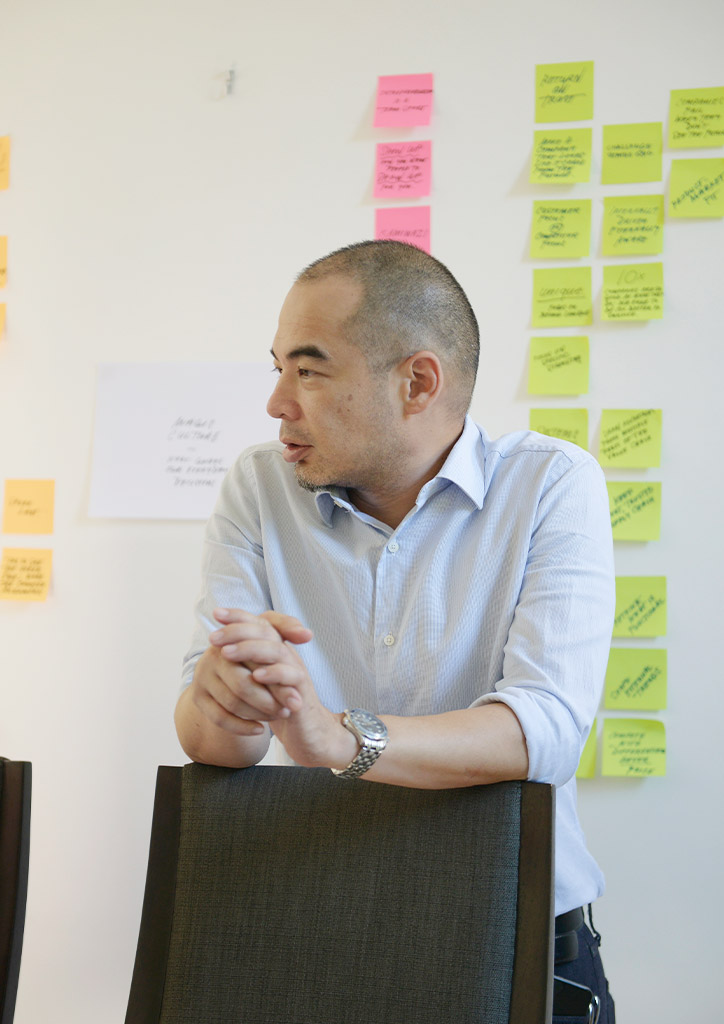
Periquet: We’re paid on a rate-of-completion basis so, no, clients don’t have to pay us while we’re benched. It’s painful, as our operating expenses continue to run, but it’s fair. This is an economic situation where both supply and demand abruptly stopped. I’ve been through several financial crises, but I’ve never experienced this. So much wealth has been destroyed in a short time, and the economic effects will not necessarily be felt immediately. We can handle postponement of some projects, even cancellations, but it’s the inability to work that can kill a company.
How do you manage client relations during a pandemic? What are you doing to keep top-of-mind for the ‘new normal’?
Vasquez: A simple, sincere message letting them know that you wish them well during this time could go a long way. It’s important to relay that you’re there—available and present—reachable 24/7, whatever happens in the new normal. When they need you, respond.
Morfosis: We informed all our clients of our new work-from-home setup, and we show them that we are still working on their projects by being visible in our usual communication channels such as e-mail and chat groups. Thankfully, most clients understand when, for example, we can’t complete the quotes from suppliers who have suspended work or can’t proceed with construction due to the ECQ.
Cariño: We stay connected on a more personal level, asking them how they are and letting them know we are monitoring things closely while taking care of the men assigned to their projects. We find this approach works best, and it has the added benefit of sending referrals our way, which has always been the main source of our work. We might, however, improve our digital presence soon.

Buensalido: Constant communication is key. At the start of the quarantine, we reached out to clients to ask how they are, letting them know that we are ready, willing, and able to continue to render our services. We communicate as personally and consistently as possible, with management and team leads sending out regular updates about the status of their projects.
During the first two weeks of the quarantine, we launched our #StayHomeStayOptimistic campaign on our social media channels, providing ideas on enjoying the home and other activities we can do alone or with the family. We did this in the hopes of spreading positivity and optimism and possibly help creative juices flowing. It’s been tough transitioning to the new normal for everyone, so we just wanted to put a catalyst of ideas out there.
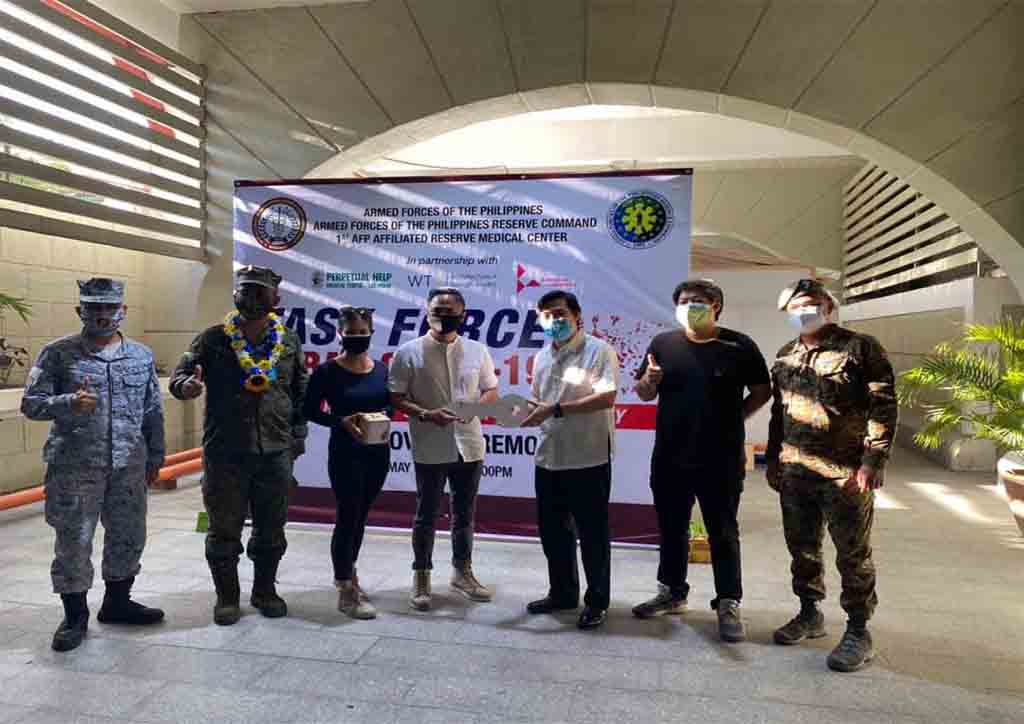
We have temporarily shifted B+Abble (our learning sessions) online, and we invite clients to attend and engage with us. We at B+A have always valued learning and integrated it into our culture. We created B+Abble for this purpose. We get speakers on different topics, from architecture, travel, fitness, music, social entrepreneurship, that allow us to cross-pollinate with other industries and expand our creative knowledge. Starting in 2013, we started holding public B+Abbles outside the office to share this culture of learning and encourage innovation through design. For the past five weeks now, during the ECQ, we’ve been sharing B+Abble with the public through Facebook Live. B+Abble has also been a conduit for us to raise funds to fully fund an Emergency Quarantine Facility and other endeavors to help the community during this pandemic.
What work have you been able to do in the lockdown? How is WFH working for your firm, allied professionals, and clients?
Lim: Work is mostly design development and FCD for soon to be constructed projects. Then we’re spending a lot of time reviewing our standards and protocols. WFH has a plus side—we save a lot of time! For example, I spend an average of six hours on the road daily, driving to meetings and site work—this doesn’t even count the commute to work.
Our corporate clients hold meetings online, which is generally succinct and productive, except for the initial technical difficulties of signing up for their preferred virtual rooms. Because our residential landscape clients are stuck at home and have more time to observe the garden, they are learning to appreciate the greens even more. They see things they want to improve or redo, and they want us to revisit their projects as soon as the lockdown is lifted.
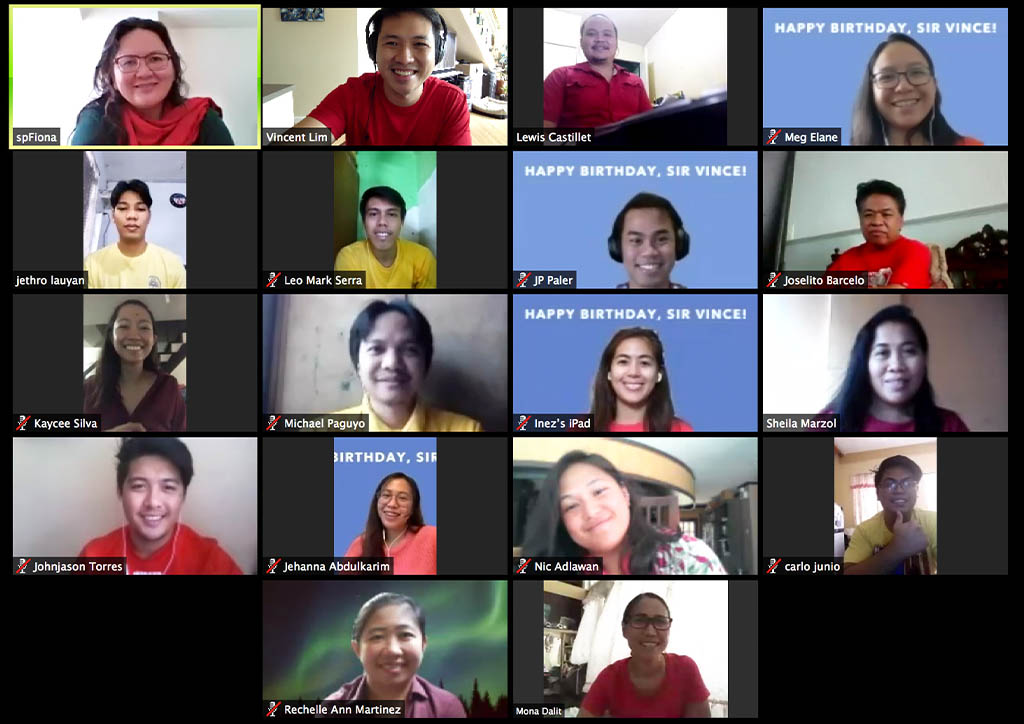
Firm-wise, the pandemic allowed us to see our weak points, something we’re addressing now. We see our firm pursuing the WFH setup moving forward.
Vasquez: I was dreading the work-from-home setup because I know the Internet infrastructure of the Philippines can’t support it. I’m not new to this concept since, at TVA&P, I’d been doing it for a decade. I managed TVA&P Cebu while based in Manila and now our main HQ while I am in the US. But it’s an entirely different ballgame when you place your entire workforce in a virtual setting, especially when the transition is rather abrupt.
Coordination was the least of my worries. With all the available platforms we could use, it was the one thing that was easy. The main struggle boiled down to three things: first, the Internet speed; second, the computer hardware of the staff; and third, our culture. By culture, I mean the way we live, the way we work, even our mindset.
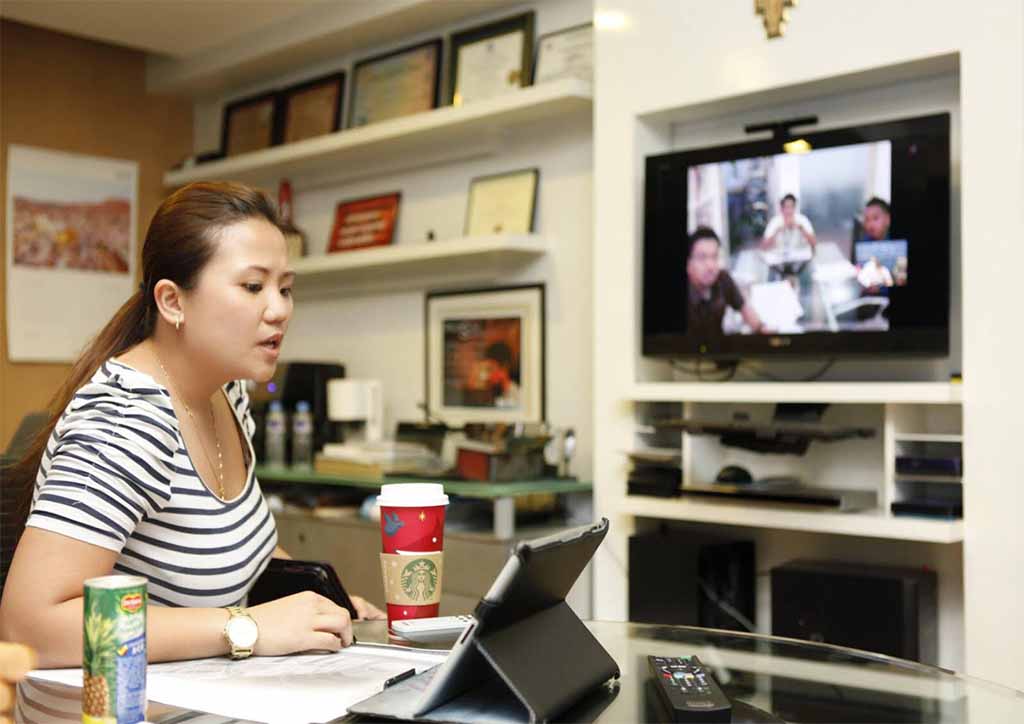
For starters, not all of us have a dedicated home office, let alone a big desk for architectural work. Some on my team resorted to working on dining tables. With an average Filipino household of at least five people, how do you find a private space where you can concentrate? Distractions are all over the place. To demand that they perform with the same productivity as a regular working day at the office is just unrealistic. But I quickly learned that businesses can strike a balance between leniency and expectations.
We use Building Information Modeling (BIM) in the office, making the transition even harder. The computers need to connect to our server and continuously link with each other, putting operations at the mercy of our ridiculous home Internet speeds. BIM files, especially for big projects, take up a lot of memory, so superior computer hardware is a necessity too. I wish we had had more time to prepare, but we didn’t. The first week of ECQ was definitely a Hail Mary. But with determination, despite the challenges, TVA&P stayed 100% operational.
READ MORE: Succeeding Success: Topy and Toni Vasquez

Morfosis: We are still doing projects in the schematic design, conceptual design, contract documents phases. These are relatively easy to do while working from home. We can successfully present design proposals to our clients virtually during ECQ. Programs like Zoom, Google Hangouts/Meet, Viber, and WhatsApp help us with communication and coordination among the team. The tricky part, understandably, is the construction phase. Once ECQ is lifted and construction works are allowed, we must ensure our employees’ safety. We have been researching government requirements and protocols for construction, and we will comply.

Buensalido: Design work, production, and coordination are what keeps all of us busy these days. We are also doing a lot of training internally. We are very thankful that we are still able to function online. Zoom, Hangouts, Teams—all of these keep us connected.
Cariño: We’ve split tasks, taking advantage of the absence of site work and everything associated with it. Operations guys are working on their audit systems to make us better. The same goes for those in purchasing, finance, etc. Partners have been busy trying to anticipate the new normal and how our business can adapt by way of technology. We are also assisting in a few initiatives as I’ve said, mostly for the health sector. The one with Andy Locsin, for example, involves the design, research, 3D printing, and stockpiling of splitters to allow multi-patient use of ventilators as a last recourse. There are more than 20 people that have worked on this and our sister company, Makerspace Manila, has 3D-printed some of the inventory. The design and maker communities’ efforts are quite inspiring.
Periquet: We’ve been busiest bringing support to our men. With the subjective implementation of checkpoints by LGUs, it’s been hard to get cash and supplies to the men (not all of them have ATMs). To do so, we’ve resorted to all manner of approaches, including looking for free routes and using all accessible Peso-Padala points.
What strategies are you employing or considering for continuity of business during and post-pandemic?
Lim: Create a forecast until December 2020. While it won’t be set in stone, this should be my North Star for the year. This way, we are grounded and make informed decisions on keeping (or even adding to) our current staff size. The forecast will come from a combination of projected work from existing projects that push through, new opportunities that we are keeping warm, and potentially new service offerings that are not purely design-related.
We hope we do not have to resize. While we don’t want to be entirely dependent on our real estate clients’ business performance, how we’d go about our staff size shall be significantly affected by it.
Also, we’re spending a lot of time reviewing our standards and protocols. We need to revisit how fast we can churn out design packages with precision and efficiency in terms of cost. We’re working on that. For Clarq Landscape Designs, we make sure our group meetings are structured to check in on each other. Now more than ever, we don’t miss our Monday management meetings to get a pulse of our weekly performance.
We will pursue a satellite work system (or WFH in some ways), and we hope this helps drive down costs and helps keep our staff safe during the new normal. Should a vaccine be easily accessible to everyone, that’s the time we will spend more time in the physical office.
Morfosis: Our project mix is 70% commercial/retail and 30% residential. The commercial/retail sector is badly hit, so we are refocusing our efforts on more residential projects. We are thankful that even during ECQ, we still get inquiries regarding residential projects and have closed one.
YOU MIGHT LIKE: Morfosis Design on its beginnings, morphing into a multifaceted studio
Buensalido: We are still in the process of regrouping, and figuring out how to proceed, doing strategic planning, creative strategizing, attending online lectures to help equip us to make decisions for the new normal. We will come up with a few new endeavors to complement B+A. The quarantine the pandemic has forced upon us has given us a lot of time to imagine more possibilities for the future.
Vasquez: Every recession is a time to calibrate operations and standards. Make use of the “slow season” to look further and improve on your daily flow. You will always come across something in your system that needs to be refined. To all those things you normally say, “I’ll do it when we have the time”, well, a tiny silver lining to the lockdown, you do now!
It will take time for the world to get back to its pre-COVID-19 pandemic pace, so companies will need to do what they can to survive. Cutting back on expenses is an obvious strategy, and often this translates to retrenching people because payroll usually makes up the biggest chunk of operational costs. I can only suggest for firms considering this scenario to do it in phases. Try reducing work hours first and see how it helps with their finances before deciding to lay off people. Consult with legal advisers to ensure every step you make follows the law. Whatever it is you decide to do, remember that effective communication is paramount. I believe employees have the right to know the financial health of the company. Whether or not the reports are favorable, you’ll be surprised at how employees cooperate, given the opportunity.
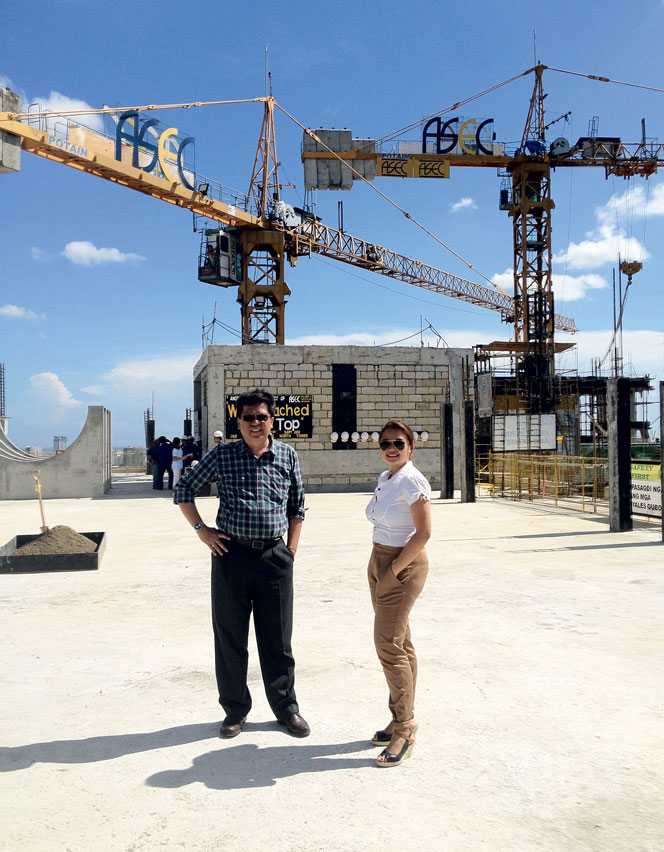
Based on TVA&P’s experience, our company truly manifested its culture during my dad’s battle with cancer. Everyone whole-heartedly cooperated with us. It was then that I realized that sometimes all it takes is to have a little more faith in people. But again, it boils down to how you communicate. Our employees look for leadership and guidance. They mirror our emotions, too, so it’s critical we deliver a message that is clear, concise, and calm. The best thing you could do as a leader is to empathize—malasakit. Let people feel that you care and let it come from someplace real.
Cariño: Organizationally, we pulled in the next-in-line leaders of Magis, now made part of the core team. We’ve been training and developing them in various aspects over eight weeks during the lockdown. We need everybody’s A-game now more than ever. That, and for business continuity’s sake, in case some of the senior guys contract the virus. These days, you never know. We’re happy these guys are stepping up.
Designers will be relying more and more on tech in the new normal. How about construction?

Cariño: Infrastructure-wise, we are embracing a few more technologies to help everybody manage and monitor the site better. For clients, we want to encourage remote monitoring instead of risking themselves to go to the site. The pipeline would be virtual tours (360 and VR-capable) and a web-based platform for remote project management. Even with just a smartphone with mobile data, our architects and clients will see everything there—updated timelines, site photos, items needing their decision on, among other things. They can also approve via their device. We kicked this off just this week, and have a mountain of tech-jargon to study.
Product mix-wise, we intend to revive elements of our furniture heritage to give our men—and their families—more chances to earn. We’ve just started engaging some designers over the lockdown, starting of course with our usual suspects. There are more projects we’d like to explore, but we wouldn’t want to stretch ourselves thin, especially not now.
How do you assess the risks versus rewards of reopening your business? Some world leaders seem to have accepted the risk of thousands more COVID-19 cases and deaths to restart their economies.
Buensalido: For our team, health will be the top priority because we can never replace a life.
Vasquez: There’s nothing more important than human life, so our employees’ health and safety is the number one priority once the office reopens.
Morfosis: Until we have the vaccine, it is quite scary for our staff and us to venture out. And so we are WFH until further notice and will only do site visits as needed, with proper PPE and following safety protocols.
Cariño: A life is a life, so that has always been the priority. It’s tough for us though, since survival can mean not contracting the virus but equally having food on the table for our construction guys. They need the work and we need to give it to them somehow. Next week, we are revisiting for the nth time protocols for when we resume work, to see if the plans we’ve set have minimized the risks from this pandemic.
How else are you preparing for the new normal? How will you prevent infection spread at work?
Lim: We will follow the 50% office force allowed. Alongside that, we will redo our office layout so that stations and seating arrangements follow the required distance between employees. We will employ sanitation measures in all the different access points within our office and garden compound, such as the main door, staff area, printing area, pantry, library, toilets, etc. Staff will be required to wear masks the whole time except perhaps when they’re working in the garden. We will be providing transportation services for our team. To those who have cars, we might appropriate an additional allowance for that.
Buensalido: As information comes trickling in, we are compiling relevant data to plan a course of action for each point. We will accommodate what we can as best as we can.
Morfosis: Everybody one seat apart; we will rearrange our office layout. We will provide PPE for all of our staff—washable mask, face shield, gloves, coveralls (if needed for the site), and put a sanitation station and stomp mat at the entrance. Personal belongings not required at workstations will belong in lockers. Workstations will be disinfected twice a day. High-contact surfaces will also be sanitized by our office helper several times a day.
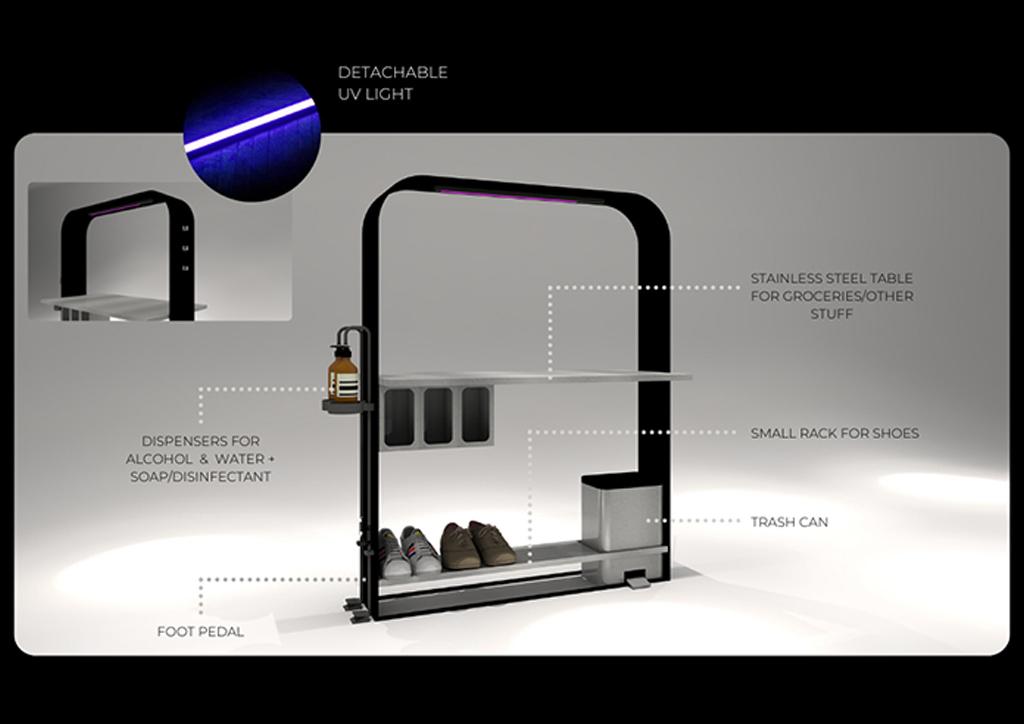
We are considering a shuttle service for our staff. Half of them live near our office, and half live quite far, so we are still planning on how best to do it. We do not want them to commute, for their safety as well as for everyone in the office. According to the IATF guidelines, only two people per row are allowed inside a vehicle. So for a sedan type car, driver and one passenger in front and two passengers at the back at most.
We are considering employees’ quarters to avoid comings and goings during the pandemic. We have some space in the office, but it’s not fitted out as living quarters. This will be our last option. We need the vaccine soon!
Cariño: To start, there are multiple guidelines coming from DOLE, DTI, among others. These guidelines already cover most items—sanitizing protocols, how to impose social distancing, how to check for symptoms, etc. On a site-to-site basis, our partner for operations, Gerson Asis, has been reviewing our lineup versus the need for social distancing. He’s looking at various implements and, if possible, limiting headcount per area in each site. Kevin De Leon, one of our promising young architects, is also working on portable sanitation booths and washbasins. Our purchasing unit has already setup supply sources for facemasks, face shields, alcohol, thermal scanners, etc.
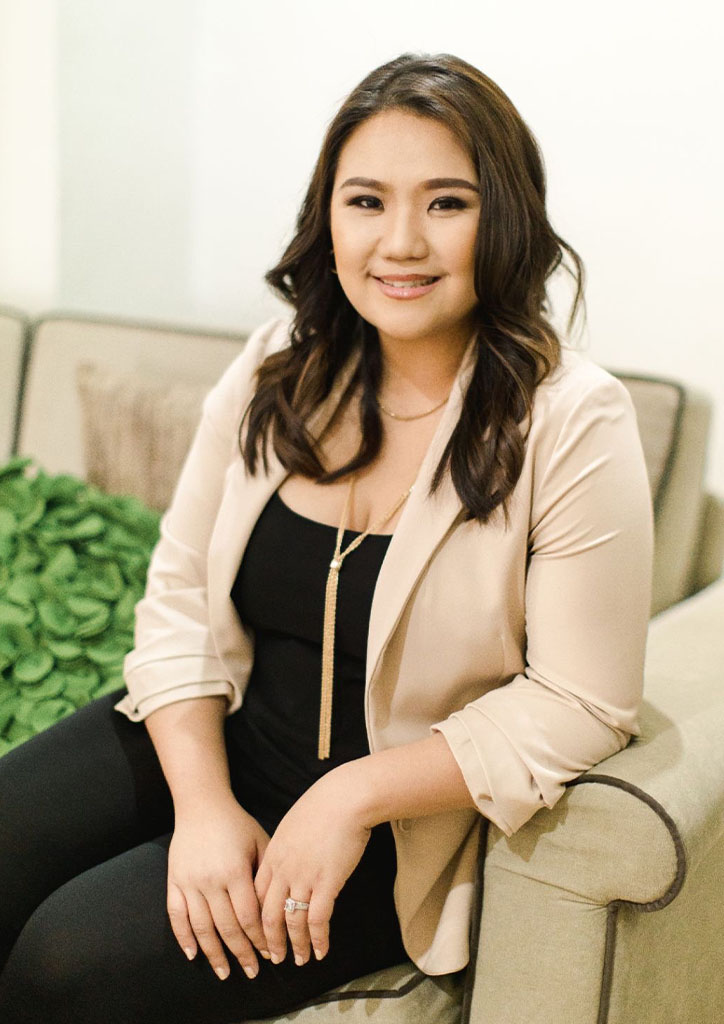
Vasquez: Employees who have rendered quality work during WFH may continue in that setup. Others, perhaps because circumstances did not permit them to WFH as productively, will have to report to the office on an off-set schedule and compressed work hours per day. TVAP will provide free shuttle service to bring them to and from work. It’s a pandemic; I am eliminating the need to use public transportation.
Sanitation procedures in the office will be implemented, with someone assigned to monitor that closely. Employees will have reusable masks and face shields, and they are required to use it in the office. We will strictly implement a “no mask, no work” policy. To determine those who are high-risk, we are surveying each employee on the members of their households. Every first business day of the week, they will fill up a form declaring whether they attended a gathering or may have been exposed to a PUI/PUM (a person under investigation/person under monitoring). These efforts will help in assessing risk and contact tracing, if necessary. We would love for everyone to get tested regularly, but, unfortunately, that is beyond our control.
What will you do should one of you catch COVID-19?
Morfosis: At any sign, even by just one person, we will require the team to do quarantine for 14 days. We have also requested them to be as honest with us as possible and not to hide if they are feeling unwell. We are looking at getting health cards for all of our employees. Maxicare has one-time-use cards for emergency room fees or COVID-19. We will have to research more on that. Some already have health insurance benefits due to tenure, but most don’t yet.
Lim: Should an employee, heaven forbid, contract the coronavirus as a result of his or her official duties, the company will fully support the medical needs.
Cariño: Protocols for such scenarios are already prepared. Like I touched on earlier, succession planning is one. Others, of course, include isolation and quarantining, contact tracing, and communication with all stakeholders.
Contact tracing and risk assessment for each employee is bound to raise privacy issues. How do you think COVID-19’s new normal will compare to the privacy intrusions brought about by 9/11?
Vasquez: This new normal will certainly bring a lot of discomfort. The great paradox of our situation today is how we are forced to be physically distanced from each other while our privacy is blatantly invaded—often with a camera, even! Every video call we make is a window into our sanctuaries. Our tiny bit of refuge is now exposed to colleagues, clients, and strangers, revealing us in our comfort zone. Think of the plethora of video calls that have gone viral over the last six weeks. They were shared mostly because the literal and metaphorical “backgrounds” were being mocked as they are revealed.
Contact tracing and risk assessment protocols are bound to expose confidential information but it is already being accepted as a necessary evil for the common good when implemented properly. Every extra safety measure put out there is going to be a hassle, yes. Just look at the inconveniences we put up with to enter a building. In the Philippines, the security at some of the buildings is like that of an airport. We open our bags, get frisked, go through a metal detector, in some places even an X-ray, and, now (thanks to COVID) joining the club is a temperature scanner and a sanitation booth too! Security is already tight and in the new normal will only get tighter, especially along borders. For someone like me who lives in her suitcase, traveling for the next few years will be even more agonizingly inconvenient. These are only snippets of the new normal which will probably stay even after a vaccine against COVID-19 is commercially available. To mitigate all this pain, hopefully, architecture and design will train their focus back on prioritizing man’s basic need for comfort and wellness over decadent interests.
What impact will pandemic-related expenses have on your business?
Morfosis: Doing WFH has lowered some of our expenses like electricity and water. We don’t have rent because thankfully we own the space. Revisiting our finances made us realize that wow, we spend so much on food for the team every month when working overtime at the office. Transportation and Grab expenses were also way up there. We view these new expenses (PPE, sanitation, COVID-19 testing, etc.) as an investment in our health, which is well worth it for us and everyone on the team.
Cariño: Our cash flow remains healthy, thankfully. We look forward to resuming site work, though. As far as year-end results will go, this was supposed to be our record year financially. COVID-19 did a number on our planned initiatives, which in turn affected our investment in tech, machines, people, and programs. In any case, 2020 really isn’t the time to think about profits and we consider ourselves fortunate to be in a position to carry on the work that we love.
How about the impact of virtual solutions on creativity and teamwork?
Buensalido: It’s challenging shifting from very personal and tactile practice to a virtual one. We miss impromptu huddles, accidental meetups, informal pin-ups, which are important in our process, as these moments bring out meaty discussions and unfiltered ideas. Now, because of the pandemic, we have to schedule online meetings to huddle.
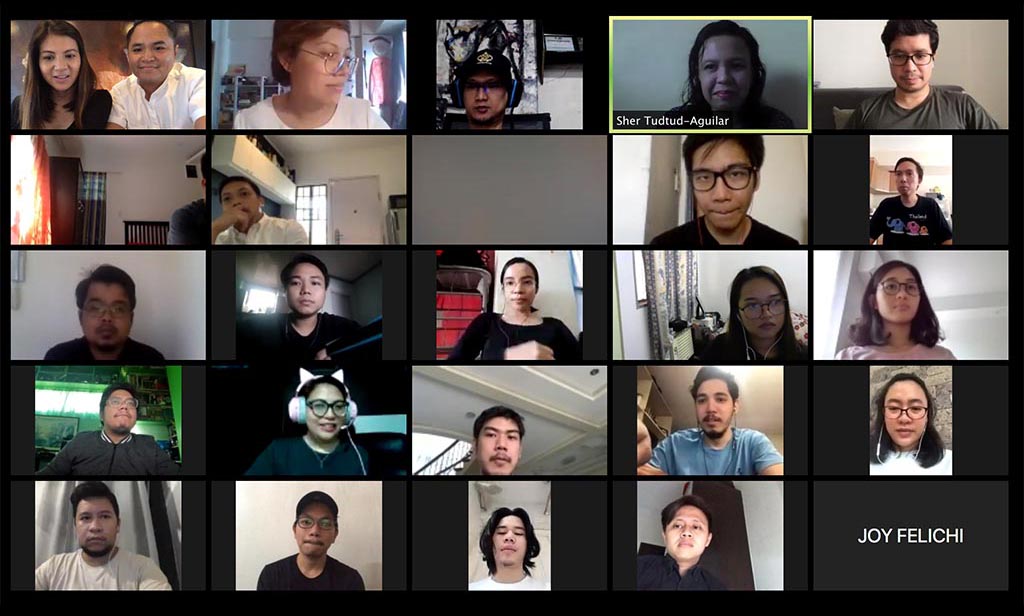
Lim: For now, we will handhold the team to ensure that communication is strong and leads to the retention of culture and driving of results. Management will dedicate more time to project meetings among the staff. As for creativity, we are still uncertain about this. We hope that both the pressure from work and (more) quiet time will potentially give birth to a new kind of creativity that is more meaningful.
Morfosis: Admittedly, we are still adjusting to doing creative, collaborative work online. At the office, we are used to doing “skull sessions” or brainstorming sessions with the team, often with a few drinks and some pizza. A lot of visual cues are lost when working virtually, and overall we just miss each other’s company and the energy and good vibes that the office always has.
Cariño: We probably embraced virtual/digital means more than typical. As cliché as it sounds, this crisis really brought many of us closer, the team stronger. We discovered new insights, surprising skills, even strong creative and critical thinking skills among people in our team. It is comforting, to say the least, to have people like these guys with us as we attack the new normal.

The most valuable learning experience from the pandemic?
Lim: We learned from this pandemic experience that everyone is vulnerable. That we need to deeply accept and surrender to the fact that things will never be the same. That we need to change our ways of thinking and our ways of doing business. That all the more we need to be connected. That collaboration is key, not just within the company but also with our allied professions, suppliers, and clients.
On the business side, we learned how liquidity is essential for a company. On the profession side, the pandemic has made the younger professionals in our team realize, better than ever before, how vital it is to have well-designed and balanced outdoor and green spaces because they genuinely matter to one’s well being, emotionally and mentally.
Buensalido: The pandemic shone a bright light on the importance of cooperation, leadership, and trust between constituents of the community and government, local and national. We need strategic, charismatic, forward-thinking, and progressive leaders who have the trust of the people.
Second, the architecture and construction industries have the power to help us avoid the catastrophes of pandemics by focusing on, improving, and providing “architecture for the common.” Aside from designing big and grand projects, those considered “mundane” or for everyday use should also be well designed. Our office has started visualizing these public-use spaces and will share it publicly through B+Abble, for others to build on.
We all need to cooperate and work together. We must put the common good first and help others as best we can instead of bringing people down or trying to push for their interests. Let us not be competitors but collaborators willing to help and support one another and each other’s causes.
YOU MIGHT LIKE: God, Man, Nature: Amara Chapel by Buensalido+Architects
Vasquez: This pandemic brings to light that time is our most valuable commodity. It is exhaustible; it cannot be stored, bought, or multiplied. One can only spend it. So now that this pandemic has slowed the world down dramatically, it gives us a chance to step back and reflect on how well we have been spending our time.
The other big lesson is adversity reveals character. How we react and deal with a crisis shows who we are, what we prioritize, and value. Through this pandemic, I’ve seen (surprising) versions of people around me. Just as some people are willing to sacrifice to help others (front liners, for instance), we also witness how others become insensitive, inconsiderate, and opportunistic.
Morfosis: Health is wealth. Life is valuable. Spend time with your loved ones. Appreciate others. Practice empathy. Be grateful. So many realizations and learnings from this pandemic. It forced us to think of only what is essential and relevant. This change in mindset will also apply to how people view interiors and design. AJ (Joseph Javier, an architect member of SPAM) shared with us that whereas before, the focus was on the grand, the corporate, the orderly, and the streamlined, now the focus will be on the small, sentimental, emotional, the essential. And I believe this will ring true for interior design and architecture.
Cariño: Collaboration makes us stronger than ever. And not just within the organization, but with everybody. Reaching out to designers, homeowners, other industry players, even those outside of it. Creative solutions and a sense of community are needed especially during a time of crisis.
Periquet: What should be the biggest take away from our COVID-19 experience is on the HR front. We are developing a better, more relevant plan to invest in culture and people. Part of this is building a better safety net for our people, and hopefully, more self-reliance—essential, regardless of whether or not the government is effective.
What impact would our experience of the quarantine, safety measures, and the concern for future pandemics have on planning, architecture, and design?
Lim: I see a great need for better-designed townships with proximate access to the essentials (food and medical facilities). I also see the need to integrate more edible plants in our designs with consideration on its sustainability and ease of maintenance. I also hope the ECQ and physical distancing experience convince authorities that cities should have bike lanes and wider sidewalks.
Buensalido: Because of the pandemic, people will value spaces they neglected before—gardens, porches, balconies, and roof decks. Roof decks and flat roofs are considered expensive due to waterproofing, maintenance, structural members and live load, etc. But people may no longer mind paying a premium for this because they now realize how important these spaces are in times of lockdown. Gardens and ancillary areas converted into vegetable gardens and balconies for exercise, recreation, and leisure spaces are treasured by those who have been fortunate to use them during the quarantine period.
Occupants and users of buildings (whether residential, commercial, mixed-use) will demand more open space and more access to the outdoors, and ‘healthy’ buildings will be a baseline. Tech will also play a big part in attaining contact-less or a contact-light experience inside buildings.
Morfosis: We have been reading a lot on post-COVID-19 design, whether it be restaurants, homes, or offices. People will become more health and sanitation-conscious, and it will show in the interior spaces we design. For example, a white paper by Design by Roar (a design studio based in Dubai) mentioned that restaurants will have ‘contact-light’ dining. Not fully contactless, but reducing the amount of contact when one is in a restaurant to surfaces, other people, etc. Layout and spacing will be affected, but I’m not sure for how long it can be sustained since rent is so expensive and every square meter counts. For homes, we see that these are some requirements that would be the norm: sanitation stations, dedicated work areas separate from resting places, more access to sunlight, a space for gardening, bigger pantry and storage, proper ventilation.
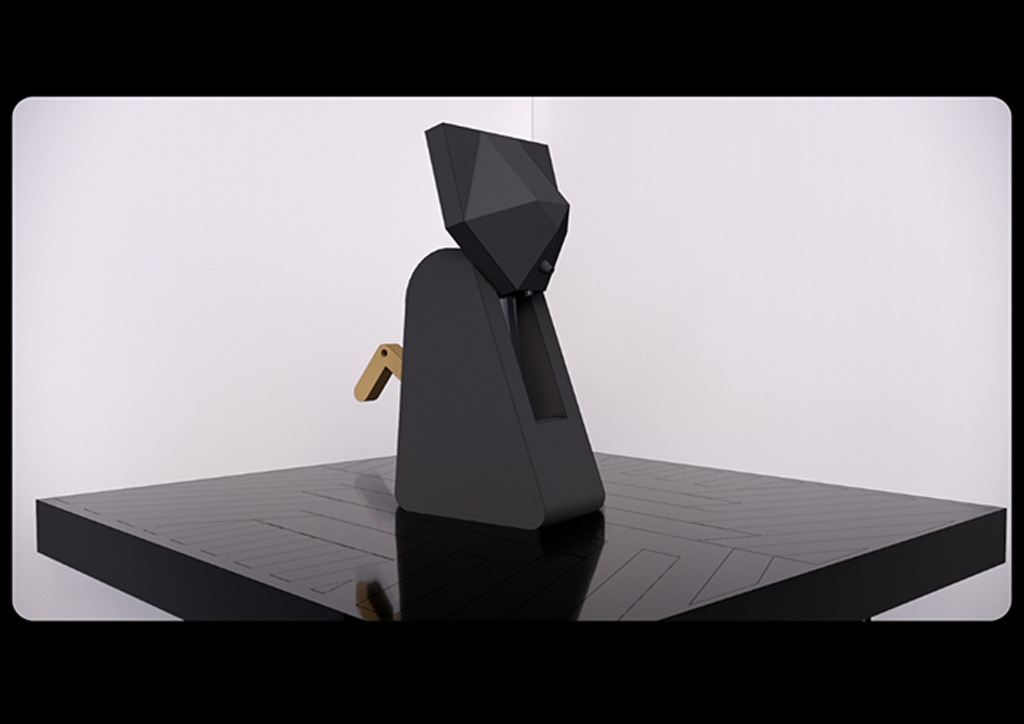
Vasquez: Everybody now has a memory of being locked down and that’s going to affect the way we look at spaces. Aside from size, people will look for quality space—places that are more comfortable, more fluid, and flexible. Because of the quarantine, people recognize the importance of liveable open space and its direct connection to one’s sense of wellbeing. Expect the residential market to offer a few new extra “standards” over the next few years. Because of the ECQ, many of us were forced to work from home and a good number of us may want to retain the WFH arrangement, necessitating a tremendous shift in our domestic setup, physical planning, and infrastructure. The demand for “sustainable living” will resurface and present itself as if a totally new idea even though it has been part of every traditional and primitive living concept known to man. But the market will expect it and the industry will respond with both new and recycled ideas.
Particularly for the Philippines, we need to examine how to make multi-generational homes work. There are its advantages and it being part of our culture, I don’t think a pandemic is suddenly going to make us want to put our elders elsewhere. So we need solutions for isolating the vulnerable when necessary while keeping the family together through communal spaces.
At the same time, architects need to understand that solving the problems of society is not entirely up to us. We share the responsibility with many others and our reach, though influential, in many ways could also be astoundingly limited. Our ingenuity will always be needed, but we are not the “catch-all solution” to everything. We need to change the way we look at issues and really listen to every sector. Allow a transdisciplinary approach in problem-solving and discover an intelligent idea from there.
Last thoughts: What keeps you up at night? What keeps you inspired in the dark days of the pandemic?
Morfosis: Ever since the pandemic started, what keeps our team and us up at night are these questions: What can we do as designers to improve the quality of life post-COVID-19? How do we design better and safer spaces? One of our team’s ECQ projects was to create sanitation stations, which we foresee will be a requirement for all our future projects. We were designing an office for one of our clients during the ECQ. Even though it wasn’t a requirement, we put a sanitation station at the office entrance. When we presented our design, the client loved it and understood that such stations would become a need for all space types.
So, we tasked our team to do design explorations of sanitation stations for their areas, or for past, present, and future Morfosis projects. We posted it on our social media and the Boysen blog, and it’s been getting good reviews so far. The next step would be to prototype these sanitation stations and make them available for sale since we have been getting inquiries.
Who is helping us get through these challenging times? Well, our pet, Pasta, the cat, is giving us so much joy. We wish he could talk. Haha. We’re thankful also that we have each other and don’t have to spend ECQ alone. Having a strong bond with our team helps. Even though apart, we frequently give each other life updates aside from work. We treat our staff like family. One of the highlights of this ECQ was our team sent us Mother’s Day messages (because they say we are their office moms) and surprise pizza and mojos from Shakey’s. So they inspire us and keep us going because they and their families depend on us.
Lim: I’m grateful for the SPAM community. (Editor’s note: SPAM is a group of about a dozen architect and designer friends in their 30s-40s, which include Lim, the Buensalidos, and Floro and Edles of Morfosis.) We exchange notes, share news, check on each other, and even talk about dilemmas in operations and, in some cases, anxieties. As owners of firms, it’s good to feel normal amongst fellow design firm leaders. It’s good to know that you have friends in the industry who believe you will survive this challenge.

Vasquez: Thanks to the lockdown, I was able to keep up with so much work backlog, but I was also able to work on personal projects that I had shelved for years. Luckily, I had a few projects that were due for conceptualization, so they certainly kept me busy—busy but not stressed. I also (finally) subscribed to Masterclass and finished some of my courses at EDX. Learning about things other than Architecture is always a treat, and I’m savoring every moment of it.
Buensalido: Uncertainty and ambiguity are real. When they hit, they hit hard. It is important to imagine different scenarios and then prepare for every possibility. To be honest, a pandemic was something we hadn’t anticipated. When news of the pandemic came in, our minds were like a roller coaster on overdrive, thinking, and planning.
Given that health and safety are compromised and are very close to home, it’s been tough, personally and emotionally. This could lead to a block or a lack of inspiration to design and create. What helps us when we feel this is to take a step back and play with our daughter. She helps us see what is important. She helps us get that sense of play and creativity again. We swim in our small balcony, and we draw and imagine a lot.
Putting our energy and emotions into something productive that would help the community and our team helped. We poured our attention into CSR efforts (B+Ase Plan Foundation), working with volunteers to build emergency quarantine facilities, and planning to future-proof the office for the next normal.
Cariño: Family. Ours and all those that we are responsible for, who depend on us—our employees and their families, our partners in business, the clients who we’re building for.
Periquet: While obviously the economic effects of the pandemic will be felt for many years, we’ve always bounced back from pandemics and crises. Humanity always showed their ability to adapt and solve problems. I feel this is especially true when one has more time to think—creativity explodes and ideas emerge.
I suppose this is why renaissance always tends to come after pandemics. In business, many of the titans like Disney, FedEx, and Microsoft, were formed in the worst of recessions. The last one (2008) changed our worldview and gave rise to today’s beloved brands like Airbnb, Uber, Everlane, Bonobos, and Warby Parker. During this time, companies like WhatsApp, Instagram, Pinterest, and Slack also emerged. We should have representation in that list as well.
Any shock to the status quo presents an opportunity. In our industry, there are a lot of pain points that need to be addressed. As a fairly busy construction company, our daily work prevented us from launching initiatives that push for more value for money and standards of quality and client experience. The forced sabbatical has allowed what really matters to get the desperately needed attention. I’m excited about a few things that we are going to launch.
It might sound a bit insensitive to talk about this when the human costs are so high, but I think we can all take comfort in this line of thinking. Light always follows darkness. Businesses will gradually come back, but there will be changes. Which door will the Philippines be pushing open?
READ MORE: INFOGRAPHIC: Find where your COVID-19 evacuation centers are


